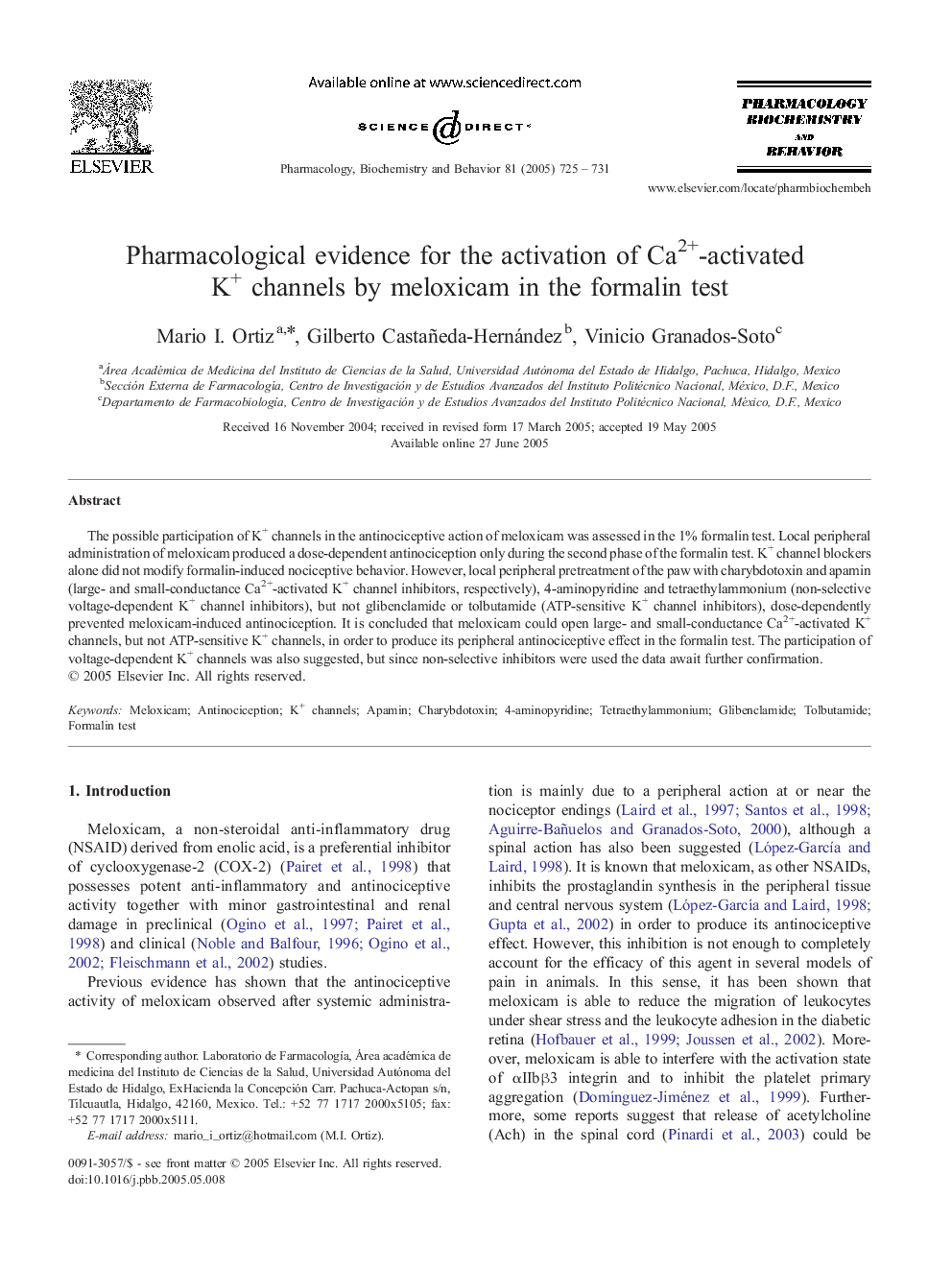| Article ID | Journal | Published Year | Pages | File Type |
|---|---|---|---|---|
| 10838528 | Pharmacology Biochemistry and Behavior | 2005 | 7 Pages |
Abstract
The possible participation of K+ channels in the antinociceptive action of meloxicam was assessed in the 1% formalin test. Local peripheral administration of meloxicam produced a dose-dependent antinociception only during the second phase of the formalin test. K+ channel blockers alone did not modify formalin-induced nociceptive behavior. However, local peripheral pretreatment of the paw with charybdotoxin and apamin (large- and small-conductance Ca2+-activated K+ channel inhibitors, respectively), 4-aminopyridine and tetraethylammonium (non-selective voltage-dependent K+ channel inhibitors), but not glibenclamide or tolbutamide (ATP-sensitive K+ channel inhibitors), dose-dependently prevented meloxicam-induced antinociception. It is concluded that meloxicam could open large- and small-conductance Ca2+-activated K+ channels, but not ATP-sensitive K+ channels, in order to produce its peripheral antinociceptive effect in the formalin test. The participation of voltage-dependent K+ channels was also suggested, but since non-selective inhibitors were used the data await further confirmation.
Keywords
Related Topics
Life Sciences
Biochemistry, Genetics and Molecular Biology
Biochemistry
Authors
Mario I. Ortiz, Gilberto Castañeda-Hernández, Vinicio Granados-Soto,
